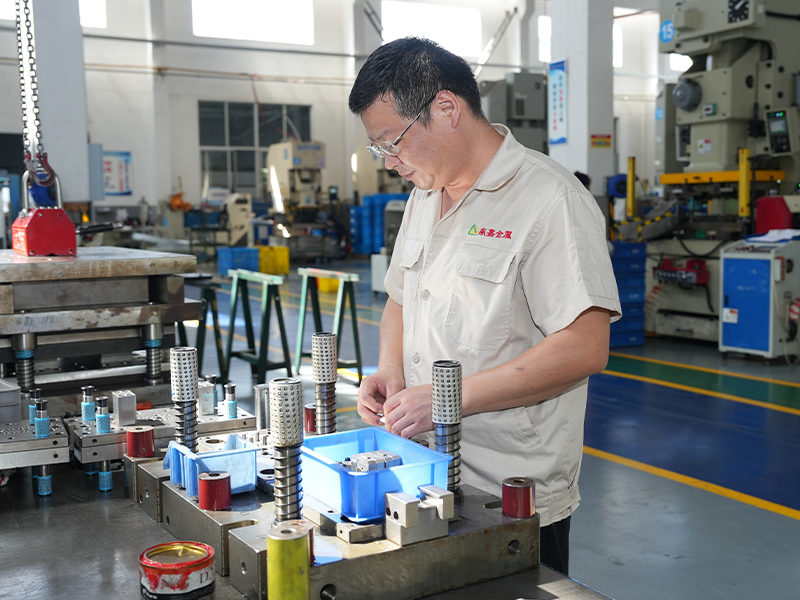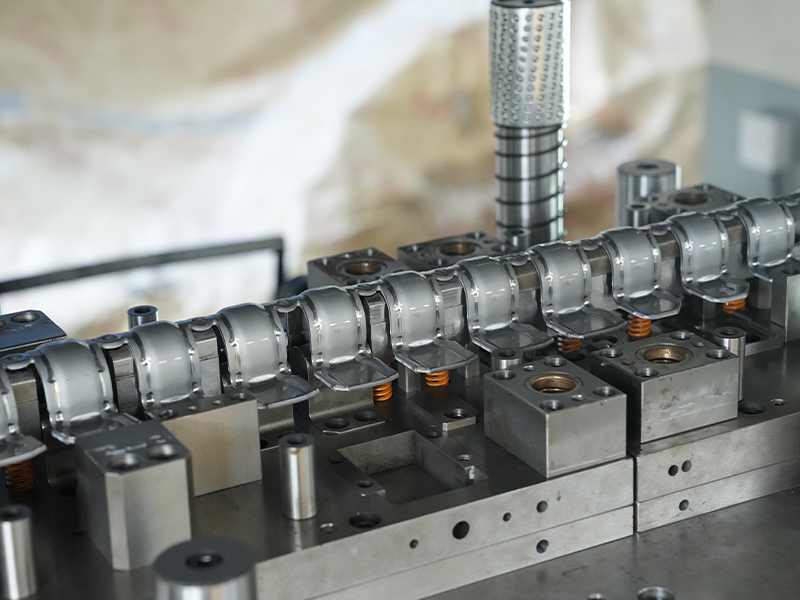Iron stamping parts are essential components in numerous industries, from automotive and electronics to construction and consumer goods. The process of creating these parts involves shaping and forming iron sheets into desired shapes, often with precise dimensions and mechanical properties. Two primary techniques dominate the production of iron stamping parts: hot stamping and cold stamping. Understanding the differences between these processes can help manufacturers, engineers, and consumers make informed decisions regarding material selection, cost efficiency, and performance.
Understanding Iron Stamping Parts
Before diving into the differences between hot and cold stamping, it is important to understand what iron stamping parts are and why they are used. Iron stamping parts are components produced by applying pressure to iron sheets to form specific shapes. The process can involve cutting, bending, punching, or embossing metal sheets to meet the required specifications. Iron stamping parts are valued for their strength, consistency, and suitability for mass production.
The choice between hot stamping and cold stamping can influence the final product’s mechanical properties, cost, and manufacturing efficiency.
What is Hot Stamping?
Hot stamping, also known as hot forming, involves heating the iron or steel sheet before forming it into the desired shape. The process typically uses a combination of heat and high pressure to reshape the metal.
How Hot Stamping Works
- Heating the Material: Iron or steel sheets are heated to a high temperature, often around 800–950°C, which allows the material to become more malleable.
- Forming: The heated sheet is then placed into a stamping die, where pressure is applied to shape it into the desired form.
- Quenching (Optional): In some cases, hot-stamped parts are rapidly cooled, or quenched, to improve strength and hardness.
Advantages of Hot Stamping
- Improved Strength and Hardness: Heating and quenching can increase the material’s mechanical strength, making it ideal for parts that must endure high stress.
- Complex Shapes: Hot stamping allows for more intricate shapes that may be difficult to achieve with cold stamping.
- Reduced Springback: Because the metal is softened during forming, it is less likely to return to its original shape, ensuring better dimensional accuracy.
Common Applications of Hot Stamping
- Automotive safety components such as B-pillars and crash beams
- High-strength structural parts
- Tools and dies requiring specific mechanical properties
What is Cold Stamping?
Cold stamping, sometimes called cold forming, is the process of shaping iron sheets at or near room temperature. Unlike hot stamping, this method does not involve heating the metal before forming.
How Cold Stamping Works
- Material Preparation: Iron sheets are cleaned and prepared for stamping.
- Forming: The sheets are placed in a die and shaped using mechanical pressure. The metal is deformed plastically, creating the desired shape.
- Finishing: After stamping, parts may undergo additional processes such as trimming, bending, or surface treatment.
Advantages of Cold Stamping
- Cost-Effective: Cold stamping requires no heating, which reduces energy consumption and equipment costs.
- Faster Production: Since there is no heating step, the stamping process is generally quicker.
- Surface Quality: Cold stamping can produce parts with smooth surfaces and sharp details, making it suitable for aesthetic components.
Common Applications of Cold Stamping
- Electrical enclosures and panels
- Decorative metal parts
- Brackets, clips, and fasteners

Key Differences Between Hot Stamping and Cold Stamping
Understanding the main differences between these two methods is essential for choosing the appropriate process for iron stamping parts.
| Feature | Hot Stamping | Cold Stamping |
| Temperature | High temperature (800–950°C) | Room temperature or slightly elevated |
| Material Strength | Produces higher strength and hardness | Strength is limited to original material properties |
| Forming Complexity | Can achieve complex shapes | Best for simpler shapes |
| Dimensional Accuracy | Less springback, more precise | More springback, may require adjustments |
| Production Cost | Higher due to energy and equipment | Lower, energy-efficient |
| Production Speed | Slower, due to heating and cooling | Faster, no heating required |
| Surface Finish | May require post-processing | Often smoother and detailed |
| Applications | Automotive safety parts, structural components | Decorative, electrical, and light-duty parts |
Factors to Consider When Choosing Between Hot and Cold Stamping
Choosing the right stamping process depends on multiple factors:
- Material Requirements: If high strength and durability are critical, hot stamping is often preferred. For lighter-duty applications, cold stamping is sufficient.
- Complexity of Design: For intricate geometries, hot stamping provides better formability. Cold stamping is more suitable for simpler designs.
- Production Volume and Cost: Cold stamping is generally faster and cheaper, making it suitable for high-volume, low-cost components. Hot stamping is more expensive due to heating and quenching steps.
- Dimensional Accuracy: Parts requiring precise dimensions with minimal springback may benefit from hot stamping.
- Surface Requirements: If surface aesthetics are a priority, cold stamping often delivers smoother finishes.
Common Misconceptions About Hot and Cold Stamping
Misconception 1: Hot Stamping Always Produces Better Parts
While hot stamping improves strength and allows complex shapes, it is not always the best choice. For lightweight or decorative components, cold stamping may be more suitable and cost-effective.
Misconception 2: Cold Stamping Cannot Handle Tough Materials
Cold stamping can handle many types of iron and steel, but it is limited by the material’s ductility. Very high-strength steels may crack if cold stamped without pre-treatment.
Misconception 3: Hot Stamping Is Slow and Inefficient
While heating and quenching add steps, modern production lines have optimized hot stamping to achieve competitive production speeds for high-strength parts.
Post-Processing and Finishing Considerations
Both hot and cold stamped iron parts often require finishing processes:
- Surface treatment: Coating, painting, or plating to prevent corrosion
- Heat treatment: Additional strengthening for cold-stamped parts
- Trimming and deburring: Ensuring safe edges and precise dimensions
The choice of finishing process may also influence whether hot or cold stamping is preferable.
Environmental and Cost Implications
Hot stamping consumes more energy due to the heating step, which can increase production costs and environmental impact. Cold stamping, being energy-efficient, is generally more eco-friendly. However, if hot stamping produces stronger parts that last longer, it can reduce long-term material usage.
Conclusion
Both hot stamping and cold stamping play critical roles in the production of iron stamping parts. Each process has its strengths and limitations. Hot stamping excels in producing high-strength, complex components with minimal springback, making it ideal for structural and safety-critical applications. Cold stamping, on the other hand, is cost-effective, faster, and produces smooth, detailed parts, making it suitable for decorative and light-duty components.
Ultimately, the choice between hot and cold stamping depends on the material, design complexity, mechanical requirements, cost, and production volume. By understanding these differences, manufacturers and engineers can make informed decisions to produce iron stamping parts that meet both functional and economic goals.













